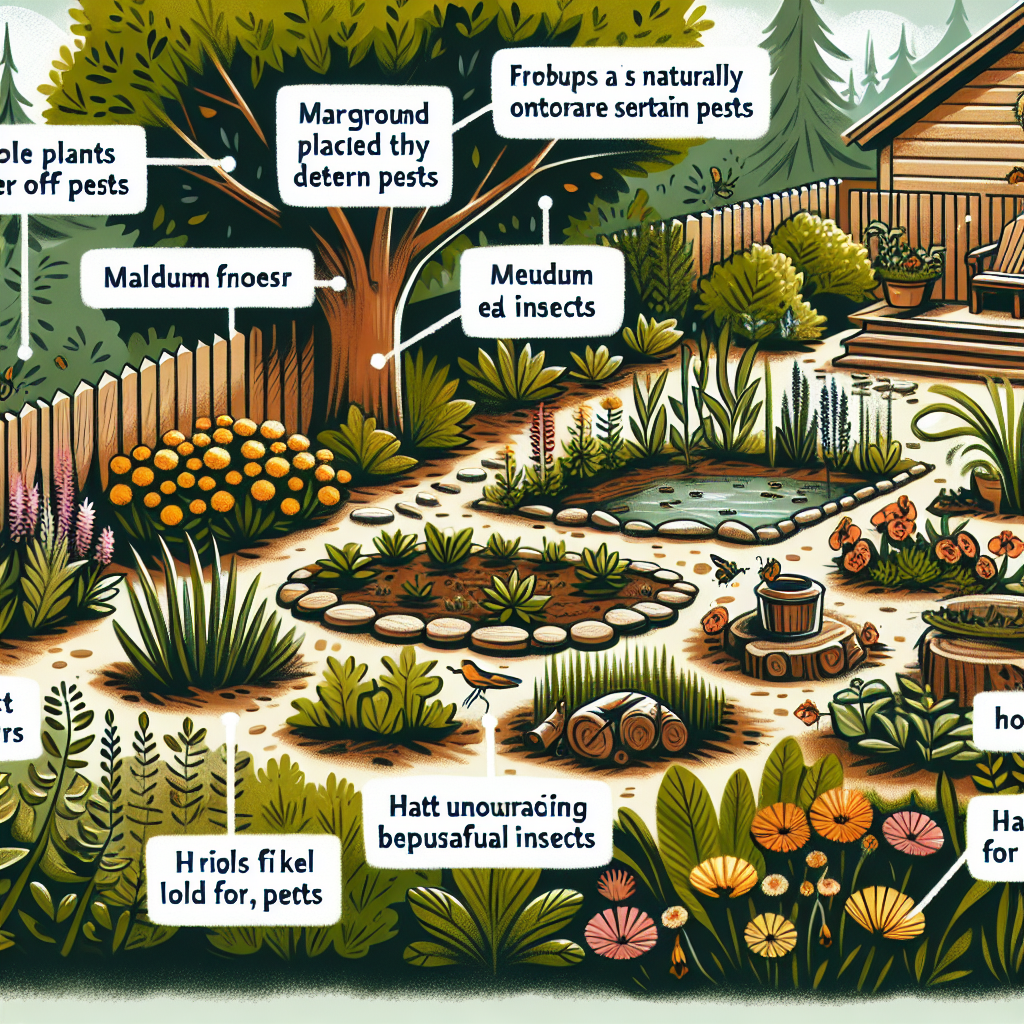Introduction: Understanding Pest Management Through Landscaping
Creating a beautiful yard goes beyond aesthetics; it’s also about creating an environment that discourages pests. Landscaping plays a critical role in pest control by allowing homeowners to design outdoor spaces that are not only visually appealing but also functionally pest-resistant. This article explores how thoughtful landscaping choices can help keep unwanted creatures at bay, leading to a healthier and more enjoyable outdoor experience.
The Importance of Landscaping for Pest Control
Many people are unaware of the profound impact that landscaping has on pest populations. Traditionally, pest control has revolved around chemical interventions. However, integrating natural strategies into your landscape can reduce the need for pesticides, making your yard safer for children, pets, and the surrounding ecosystem. Here, we’ll delve into specific landscaping techniques that deter pests effectively.
Choosing the Right Plants: Natural Deterrents
One of the foremost ways to design a pest-resistant yard is by selecting plants that are known for their repellent properties. Here are a few examples:
Aromatic Herbs
Plants like basil, lavender, and mint exude scents that many pests find irritating. By interspersing these aromatic herbs among more susceptible plants, you can create a natural barrier that keeps pests like mosquitoes, flies, and aphids at bay.
Native Plants
Native plants are adapted to the local climate and tend to be more resilient against local pests. Because they have evolved alongside these pests, they often have built-in defenses. By incorporating native species into your landscape, you can promote ecological balance while minimizing pest issues.
Marigolds and Chrysanthemums
These cheerful flowers do more than beautify your garden—they can also help deter aphids, nematodes, and even certain beetles. Planting these flowers in key spots can enhance your yard’s pest-resistance while adding vibrant color.
Strategic Plant Placement: Creating Barriers
The layout of your plants can significantly impact pest behavior, and strategic plant placement is a key component in effective landscaping for pest control.
Use of Companion Planting
Companion planting is the practice of planting certain crops together to enhance growth and deter pests. For example, planting tomatoes alongside basil can repel tomato hornworms while promoting healthier plants. By designing your garden with strategic companion pairings, you can naturally ward off pests.
Spacing and Height Considerations
Tall plants can provide shelter for beneficial insects while shading smaller plants from sunburn and overheating. Moreover, carefully spaced plants can enhance airflow, reducing the humidity levels that attract pests like mosquitoes and snails.
Creating Natural Barriers: Hardscaping and Mulching
In addition to plant selection and placement, hardscaping and mulching are key elements of pest-resistant landscaping.
Paths and Patios
Incorporating stone paths or patios can limit pest access by creating physical barriers. These surfaces reduce the likelihood of pests entering your garden while providing a clean, tidy look.
Mulching Wisely
Using mulch can deter many pests, especially if you choose materials such as cedar mulch, which naturally repel insects. Mulch also helps regulate soil moisture and temperature, facilitating healthier plant growth while simultaneously making your yard less inviting to pests.
Maintaining Your Pest-Resistant Yard: Regular Upkeep
A beautifully landscaped yard requires regular maintenance. To keep pests at bay, consider the following tips:
Pruning and Cleaning
Regularly removing dead plants, pruning back overgrown foliage, and cleaning up fallen fruits can minimize pest habitats. Consider creating a composting area away from your main garden to avoid attracting unwanted critters.
Water Management
Pests like mosquitoes breed in standing water. Pay close attention to irrigation practices, ensuring that water drains properly and that plant bases aren’t overly wet. Creating a rain-garden can also function as a drainage solution while providing habitat for beneficial insects.
Conclusion: A Harmonious Balance
Designing a pest-resistant yard through thoughtful landscaping is not only feasible but also rewarding. By selecting the right plants, strategically placing them, and incorporating hardscaping elements, homeowners can create outdoor spaces that are beautiful, functional, and less appealing to pests. Embrace nature and its inherent abilities to shape your landscaping choices—this harmonious balance will not only result in a stunning yard but will also contribute to effective, sustainable pest management.
Remember, a well-designed landscape can transform your home into a welcoming environment, attracting beneficial wildlife while repelling undesirables. With a little planning and mindful landscaping, you can enjoy your outdoor space to its fullest, free from pest concerns.


